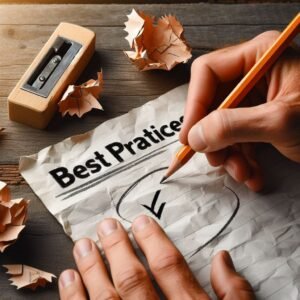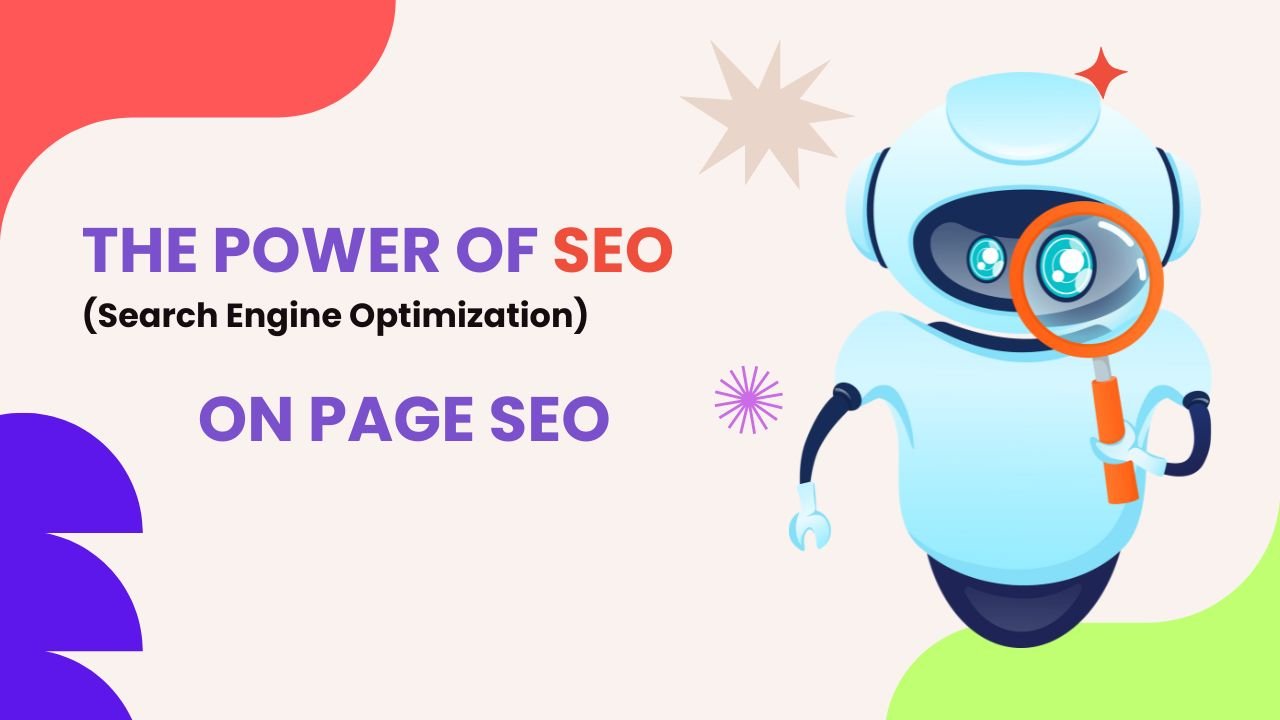On Page SEO, Complete Understanding in 2025
On-page SEO is a basic element of SEO that aims at decoding every page on a specific website so that the website can rank highly on internet search engines. On-page SEO is different from off- page SEO in terms of its focus, whereas the latter is about external factors such as link acquisition and social signals, the former is concentrated on the website’s internal elements.
Why On Page SEO Matters
On-page SEO is critical for several reasons. Here are someone’s.
- Relevance and User Intent: Therefore, when you properly use keywords on the pages and its content you are likely to achieve maximum utilization of the sections in the path that users are likely to search. This enhances the probability of your pages to be retrieved by the user each time user is searching for related queries.
- User Experience (UX): On-page SEO makes the website more ‘‘user friendly’’, loads very quickly and has relevant content to the target audience’s searches.
- Search Engine Rankings: In fact, search engines such as the Google, examine the extent and the manner, how well, a given web page ought to be ranked on a given set of keywords. Right optimization will help to enhance the rankings and thus the organic traffic.
- Competitive Advantage: Thus, tight on-page SEO is a way to offer the Web site that would be considered by more consumers and potential customers in a competitive market.
Key Elements Of On-Page SEO
On-page SEO is a set of activities aimed at optimizing various factors on every web page. Here are the critical components.
1. Keyword Research And Optimization

- Keyword Research: This means coming up with a list of appropriate keywords and phrases that the target market employs in a search for information of the kind provided by your business. Some of the good resources to find keywords with good search volume and competition level are Google Keyword Planner, SEMrush, ahrefs and others.
- Keyword Optimization: After you have selected the target keywords, it is important to incorporate them into the most appropriate and substantial parts of the page.
- Title Tag: The title tag refers to the headline of a site and is clickable in the search engine results, place primary keywords at the start of this tag.
- Meta Description: Your meta description should be brief but contain the principal keyword and call users to explore your page.
- Headings (H1, H2, etc. ): Provide headings to logically and clearly divide the given content. It is recommended to incorporate the keyword to you intend on targeting in these headings to increase the website’s readability and SEO opportunities.
- URL Structure: By keeping the URLs shorter, it is easy to name them descriptively and, where possible, incorporate the target keywords. It is not recommended to include any numbers or a series of letters in the links.
- Content: Provide comprehensive information to the user in the content and naturally place link-worth keywords. These words should not be placed excessively in the article, however, they should be used in sufficient quantities so that the article’s relevance to a certain topic would be easily understood.
2. Content Quality And Relevance

- High-Quality Content: Optimization should therefore aim at creating contents that would be of desirable value to the users while solving their problems. This is why a reader should ensure that he or she does not present content that has been copied and pasted to avoid being in this category.
- Content Structure: Break up your content into sections and subsections with headings and subheadings to enhance the format and for SEO too with H1, H2, and so on. Make use of subheadings and lists as much as possible, so that content does not look crowded and to enhance the readability.
- Engagement: Focus on production of content which would spur activities such as comment string, sharing, and higher amount of time spent by a user on the specific page. Active users interact also tend to revisit your site, which is beneficial in cases of an improved SEO response.
3. The Relation B/W User Experience And Technical Aspects of SEO

- Page Speed: Make sure that the loading time of your website is fast whether it accessed through a PC or a smartphone. Another option is to use applications.
- Mobile Optimization: As the utilization of mobile devices rise in popularity improve your site for people accessing your site through mobile devices. Make sure that the content can be viewed on any device, the layout and the fonts are responsive with a clear structure on small screens.
- Internal Linking: Make sure to link the pages that are related to each other on your website through the use of proper anchor text. Linking to internal pages aids in the distribution of link power throughout your site. It also improves user navigation.
- External Links: Where appropriate add active external links to credible sources. This can also add to the reliability and the authority of the created content.
4. Optimized Multimedia

- Images: Body text must be optimized while writing, one of them is optimizing an image by adding (alt text) that contains keywords. This is helpful for identification by searching engines of the content of the images and sometimes increase visibility in the image search.
- Videos and Other Multimedia: Where possible, include source videos, animation and other media materials. These can improve the time people spend on your web page, help search engines understand that people like your content, which means, it is useful.
5. On-Page SEO Best Practices

- Regular Updates: Update your content frequently to ensure it content is fresh and stays in tune with what is on trending. Make sure that any content you have on the site is updated on a regular basis and/or is increased in quantity to ensure that the content stays useful for the user.
- Analytics and Monitoring: Other tools like Google Analytics, and Google Search Console can be used to track the efficiency of the page. Measures include analyzing traffic, numbers of visitors from organic search, bounce rates, and conversion rates among others to see gaps that need to be filled.
- Schema Markup: Provide schema markup (structured data) used to assist the search engines in getting the meaning of your content. This can help you to get a better positioning in search results with rich snippets like stars, product details or event occurrence.
Conclusion
On page optimization is crucial in the process of enhancing visibility of a certain website, attracting targeted audiences and providing the organic growth of a site rank. In this way, the concentration on keyword research, content quality, UX, technical factors, and main SEO principles will help to build a proper strategy. Ensure that your performance is benchmarked and change it from time to time depending on the changes in the integrated model to compete effectively in the digital environment.
On-page optimization for SEO is beneficial in raising the website’s exposure and traffic but it also helps in building credibility towards the brand. For small and big businesses alike, on-page SEO is a surefire way of maximizing website traffic from the target audience, boosting conversion rates.
F.A.Qs
1. What is on-page SEO?
On-page SEO is a technique of optimizing factors within website to enhance its position in search engines. It deals with such aspects as keywords, content and other technical parameters of the particular pages.
2. How can keyword research be used to optimizing on page SEO?
Keyword research involves the process of finding out the particular terms and phrases that your target market types into the search engine. When used properly in your content, titles and meta descriptions they will enable search engines to properly interpret and rank your pages for related search terms.
3. What specific factors should be paid attention to while optimizing on-page?
They consist of keywords and key phrases, high-quality content, content arrangement, UX, page speed, mobile responsiveness, internal and external linking and multimedia, and frequent updates.

